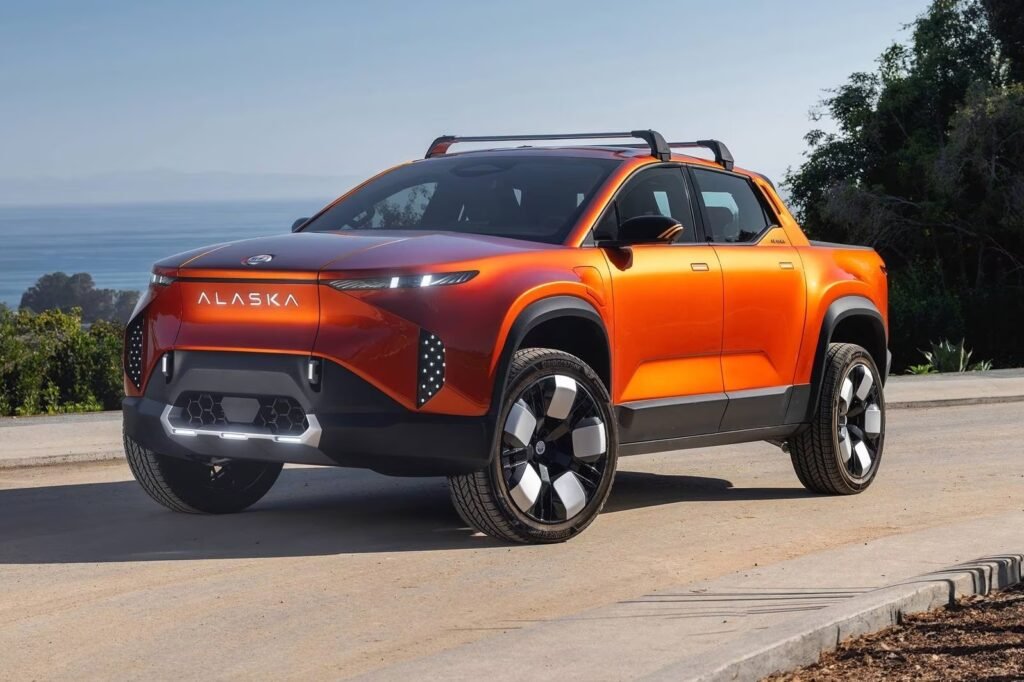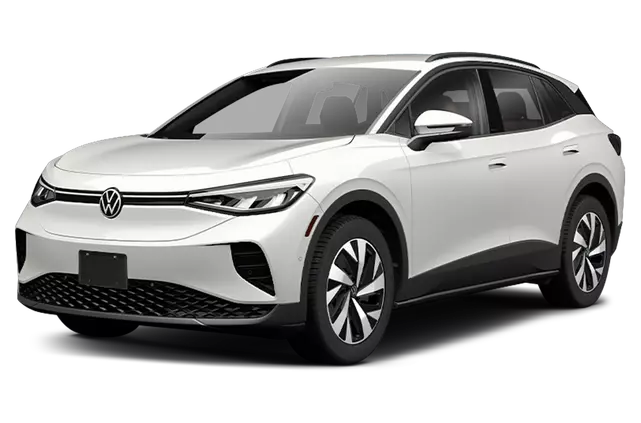The electric vehicle (EV) landscape is evolving rapidly, with Fisker leading the charge with its innovative lineup. The much-anticipated Fisker Alaska EV Pickup is among the standout offerings, poised to make waves in the electric truck market. With its unique design, impressive features, and competitive price point, it aims to compete with the likes of the Ford F-150 Lightning and Rivian R1T.
Image credit: media.ed
Unveiling the Fisker Alaska: A Game-Changer in Electric Trucks
The first glimpse of the Fisker Alaska in 2020 was a tantalizing preview of what’s to come, showcasing a rugged, low pickup with chunky tires. Fast forward to today, and Alaska is no longer a secret, set to compete against formidable rivals like the Rivian R1T and Tesla Cybertruck. Sharing its platform with the Ocean SUV, it promises clever design attributes and a unique position in the electric truck segment.
Release Date and Pricing
As Fisker continues to roll out the Ocean electric crossover, the spotlight is on Alaska as one of the brand’s most significant products. The release date is set for later in 2025, with production kicking off in Q1 of the same year. While there are hints from CEO Henrik Fisker about a potential earlier release by the end of 2024, enthusiasts are eagerly awaiting confirmation.
With a starting price of $45,400 before incentives, it positions itself as a compelling option in the electric truck market. A $250 reserve fee secures a spot on the waiting list, decreasing to $100 for reserving a second model. The strategic pricing places Alaska as a more affordable alternative to larger electric pickups like the Ford F-150 Lightning and Rivian R1T.
Design That Commands Attention
The Fisker Alaska’s exterior is a breath of fresh air in the pickup segment, breaking away from convention with a sporty and futuristic design. The brand’s name is proudly emblazoned in bold letters across the front, ensuring you won’t miss this electric powerhouse on the road. Unlike some competitors, it avoids the faux grille, opting for a smoothed-over nose accentuated by a central intake with honeycomb mesh. Ultra-slim headlights and vertical daytime running lights contribute to the Alaska’s striking appearance.
Pop-out door handles, large wheels ranging from 20 to 22 inches, and exaggerated wheel arches add to the overall sporty vibe. The innovative ‘Houdini partition’ steals the spotlight as one of the truck’s most distinctive features. This electronically lowered panel behind the rear seats creates an extendable cargo bed, showcasing Fisker’s commitment to combining form and function.
As for colors, details are yet to be confirmed, but it is expected to inherit the Ocean’s diverse color palette, including shades like Night Drive, Great White, Horizon Gray, and the vibrant Solar Orange.
Dimensions and Weight: Striking the Perfect Balance
Positioned between a compact and mid-size pickup, the Fisker Alaska boasts dimensions that offer a sweet spot for maneuverability and functionality. With a length of 17.4 feet (208.8 inches), Alaska exceeds the Ford Maverick’s length, providing a rough guide for size expectations. While other official dimensions are pending, Fisker emphasizes its design as the lightest electric pickup in the world, targeting a weight of around 5,000 lbs. This design choice aligns with Fisker’s commitment to creating sustainable and efficient electric vehicles.
Powertrain and Performance: A Symphony of Efficiency
Although specific details about the powertrain are limited, the Fisker Alaska is expected to share components with the Ocean electric crossover. Offering two battery pack options – 75 kWh or 113 kWh – the Alaska aims to deliver a projected range between 230 and 340 miles. The power figures, expected to range from 275 to 540 horsepower depending on the trim level, promise a healthy dose of performance.
Anticipated to feature all-wheel-drive as standard, Alaska’s 0-60 mph times are projected to be as quick as 3.9 seconds, with the slowest version topping out at 7.2 seconds. Drawing inspiration from the Ocean’s driving modes – Earth, Fun, and Hyper – along with an available Boost mode, it is set to offer a versatile and enjoyable driving experience.
Towing capabilities, while not a primary focus due to its smaller size, are expected to be competitive. With the Ocean’s towing capacity reaching 4,000 pounds, the Alaska is projected to surpass 5,000 lbs, balancing capability and efficiency.
Range, Charging, and Battery Life: Pushing the Boundaries
Fisker aims to redefine expectations with Alaska’s projected range of 230 to 340 miles, surpassing competitors like the F-150 Lightning. The two battery pack options – 75 and 113 kWh – allow for a versatile range tailored to different driving needs.
A notable feature carried over from the Ocean is the ability to disengage the rear electric motor to boost range, providing a clever solution to maximize efficiency.
Charging infrastructure is a critical consideration for electric vehicles, and Fisker addresses this with a partnership with ChargePoint, offering over 16,700 DC fast charge ports in the country. The Fisker Wallbox home charger is expected to provide convenient and fast charging, adding around 200 miles of range in 30 minutes with DC fast charging.
Interior and Cargo Space: Sustainability Meets Practicality
Step inside, and you’ll find an interior that blends sustainability with practicality. Shared design elements with the Ocean crossover include a large 17.1-inch center touchscreen, offering a tech-forward and user-friendly interface. A second vertical screen for the front-seat passenger and a driver-focused display contribute to its futuristic cabin.
Sustainability takes center stage with fabric-like materials from reclaimed wood on the dashboard, aligning with Fisker’s commitment to environmental consciousness. While genuine leather is not expected to be available, fabric and imitation leather seat options balance luxury and sustainability. Classy wood trim in the cabin and suede-like materials on the seats add to the premium feel.
Generous interior storage is given for a pickup, and it delivers with the world’s largest ‘big gulp’ cupholder, a cowboy hat holder, a particular storage area for work gloves, a large center armrest with storage, and a passenger tray with a tablet holder. The cargo space in the trunk is highly customizable, with the innovative ‘Houdini partition’ allowing the 4.5-foot bed to expand to 7.5 feet. Folding the rear seats and flipping the electronic liftgate down provide a maximum of 9.2 feet cargo space.
Final Thoughts: A Glimpse into the Future of Electric Trucks
In conclusion, the Fisker Alaska EV Pickup is a symbol of innovation, sustainability, and performance in the electric truck market. With a design that commands attention, a price point that makes it accessible, and a commitment to pushing the boundaries of efficiency, it aims to be a game-changer. Fisker’s emphasis on sustainability in materials and production sets the Alaska apart as a forward-thinking option in the world of electric vehicles.
As production gears up for a potential release in late 2024 or early 2025, the Fisker Alaska invites consumers to reimagine the possibilities of electric pickups. The blend of design ingenuity, environmental consciousness, and affordability positions Alaska as a strong contender, leaving enthusiasts eagerly anticipating its arrival on the roads. The Fisker Alaska EV Pickup is not just an electric truck; it’s a revolution in motion, paving the way for a new era of sustainable and high-performance vehicles.


